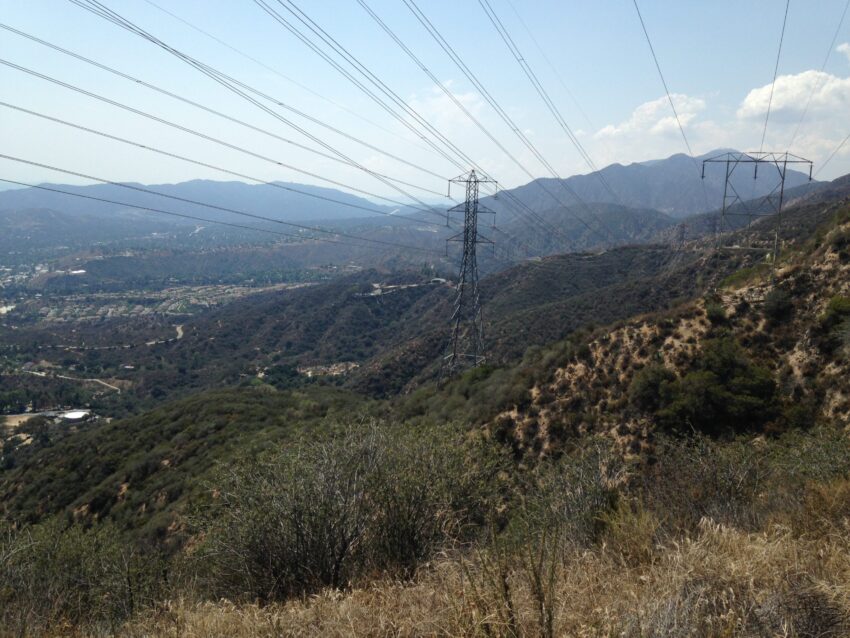As we turn the page on a new year, grid operators are still scrambling to make sense of a whirlwind 2024 in energy. Last year, utility companies nearly doubled their projections for U.S. electricity growth, reversing a decades-long trend of flat demand. Our 2025 grid predictions include massive infrastructure expansion as the energy sector braces for a year of intense action as it grapples with increased load demand, deployment of distributed energy resources (DER), grid modernization, regulatory hurdles, extreme weather, and growing calls for environmental justice. The traditionally slow-moving and rigid grid is like an aircraft carrier suddenly trying to change course on a dime.
New generation needs and a changing load demand
Exploding load demand tops our 2025 grid predictions. Hyperscalers, EV adoption, and industry electrification driving new load demand top our 2025 grid predictions. To meet load demand, a dizzying number renewable projects, predominantly solar and wind, are expected to come online in 2025. Small-scale DERs will operate as virtual power plants to help balance load demands. Wood Mackenzie predicts an additional 217 GW of DER capacity through 2028. Curtailment-focused assets like bidirectional EV charging and building energy management systems will account for half of the new DER capacity, and renewable energy and energy storage will fill the other half.
As more renewables come online in 2025, grid planners and operators must solve for intermittency. Battery storage will play a pivotal role in mitigating intermittency, with U.S. developers expected to complete over 300 utility-scale battery storage projects by the end of 2025. New fossil fuel generation is also likely to break ground in 2025 and will ideally be equipped with carbon capture and sequestration systems. We will see greater adoption of energy management systems and smart grid integration tools utilizing real-time data to help establish reliability in a decentralized generation landscape.
Grid-scale equipment upgrades
The timeline for building grid infrastructure is three to seven times slower than the buildout of DERs. Legacy grid assets will have to be upgraded to make up for this deployment gap. Millions of essential electrical components like power transformers need to be installed, as do thousands of miles of transmission lines, countless substations, and other critical electrical infrastructure. Furthermore, smart grid tech will have to interface with legacy generation and transmission assets, acting as an interface between digital-first DERs and legacy grid assets and equipment.
Regulatory hurdles
Connecting to the grid can take seven years or longer. Currently, there are over 12,000 projects in the U.S. interconnection queue, totaling 1,570 gigawatts of generation capacity and over 1,000 gigawatts of storage. Virtually all of these projects are clean energy resources, which last year alone caused the backlog to balloon 30 percent. This delay highlights the urgent need for permitting reform to accelerate the deployment of critical energy infrastructure. In response, the federal government has allocated $30 million to the Artificial Intelligence for Interconnection (AI4IX) program, which uses AI to quickly identify application errors — one of the primary contributors to queue congestion. AI4IX is just one of many innovations we can expect to streamline permitting and policy processes to solve grid challenges in 2025, ensuring new energy generation can connect to the grid quickly while fostering better coordination among decentralized energy resources.
Extreme weather
Last summer was the hottest on record, driving increased load demand for cooling. In the U.S., summer peak demand is expected to surge by 38,000 megawatts over the next five years, equivalent to the entire electric demand of California. A record-breaking 2024 hurricane season and the threat of wildfires further expose grid fragility. The grid not only needs to be shored up to withstand inclement weather; it has to drastically expand generation, storage, and transmission capabilities amidst increasingly volatile weather patterns and ballooning load demand. And as we turned the calendar, 2024 became the first year in recorded history to exceed 1.5 degrees Celsius of warming, a bellwether of additional grid challenges in 2025 and the decades ahead. Just days into 2025, the Greater Los Angeles area is burning, underscoring the serious encroachment of climate change on civilization and a harbinger of the difficult months and years ahead.
NIMBYism
Building a grid for the 21st century is a unique opportunity to create an energy system that serves everyone’s needs. With careful planning and deliberate engagement with the community, the grid can be optimized to protect those most vulnerable to climate change while minimizing the negative effects of buildout. Local environmental justice concerns must be satisfactorily addressed as the grid expands and modernizes. Energy infrastructure projects must rigorously and meaningfully respect tribal sovereignty, protect water resources, secure community buy-in, protect marginalized communities, and preserve biodiversity.
Wrapping up 2025 Grid Predictions
We’re 25 years away from 2050, and the new year signals a pivotal moment for the energy sector. While challenges remain, there’s plenty of reason for optimism. For example, most new generation capacity is clean energy, and these renewable assets helped prevent major grid disruptions during the hottest months of 2022 and 2023, a portent for additional milestones we’ll likely see in 2025 and beyond.
Got a question for Christian? Feel free to send him a message or leave a comment. If you’re ready to dive into the work ahead, contact FischTank PR to explore how their sustainability and climate tech expertise can elevate your brand.




